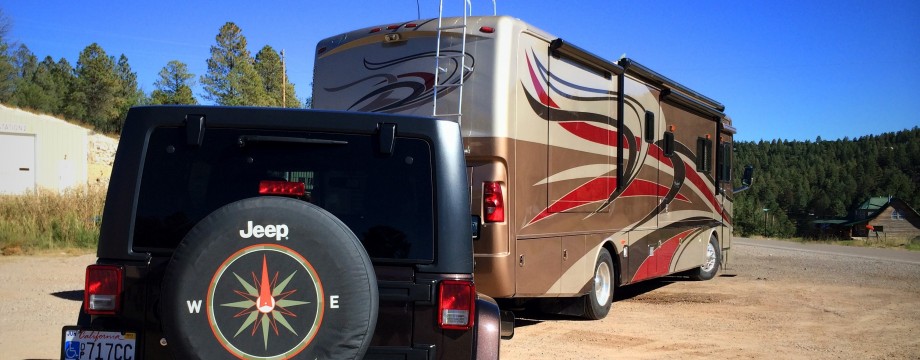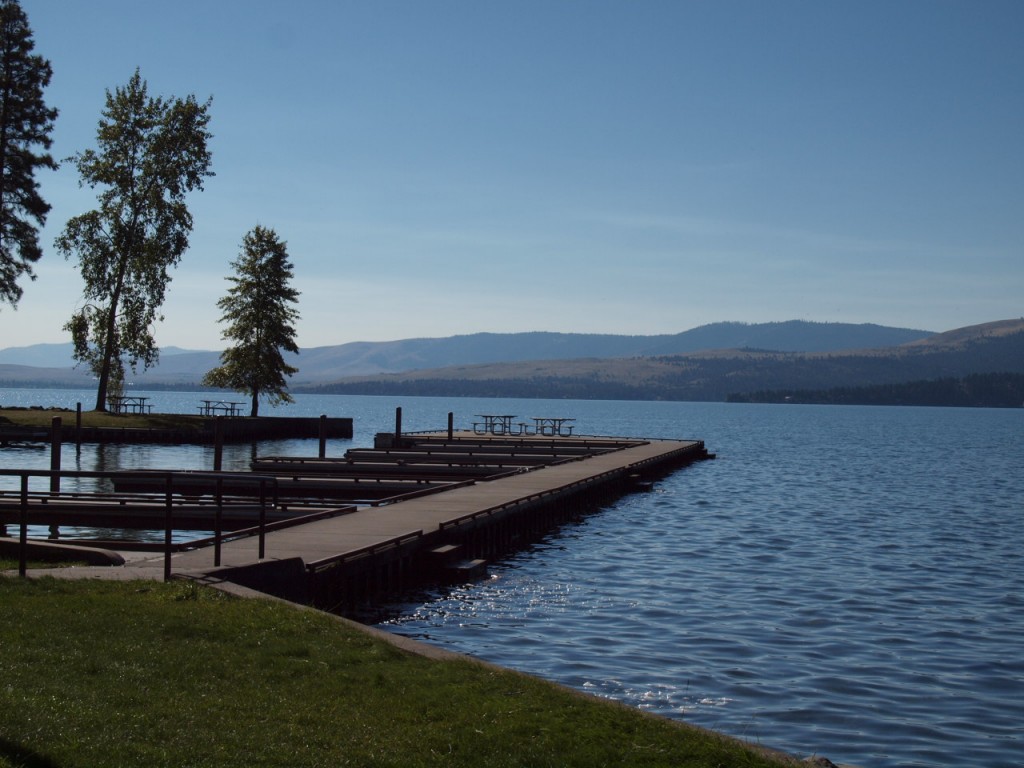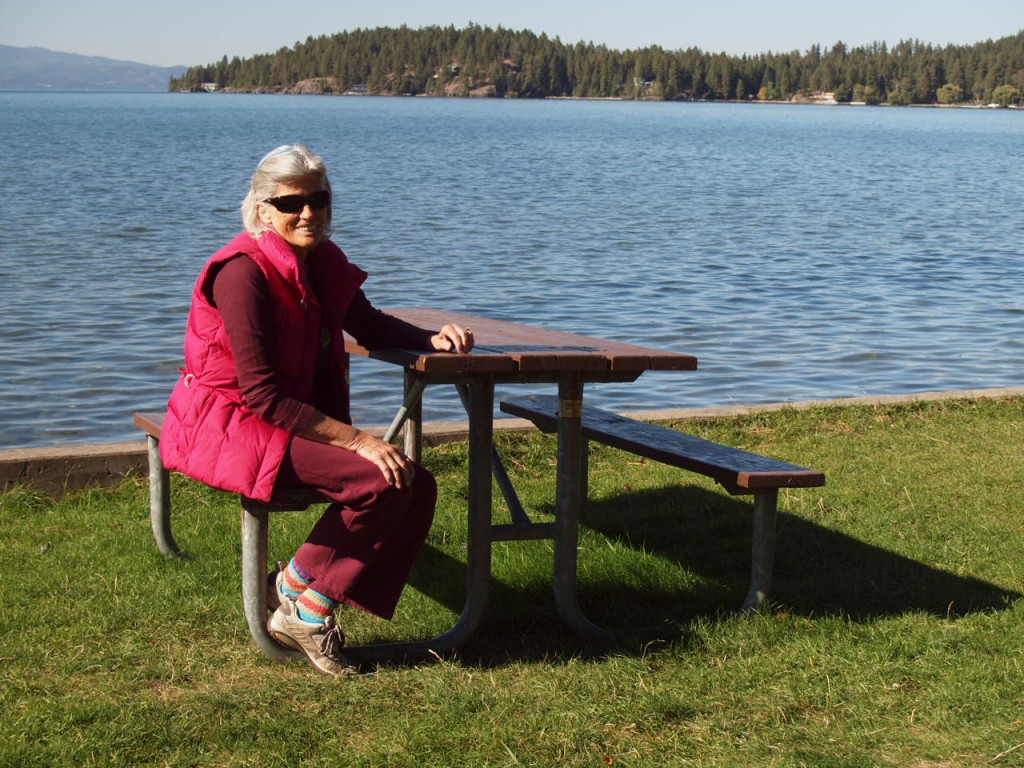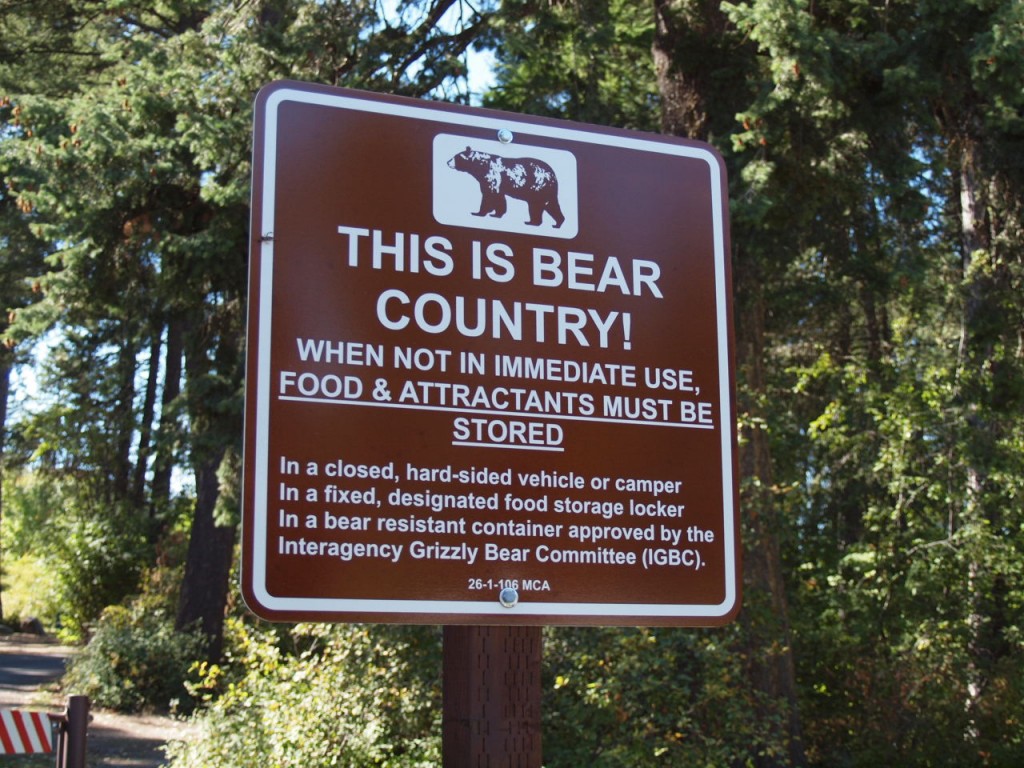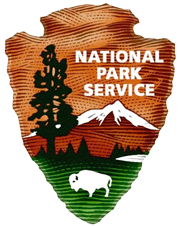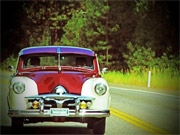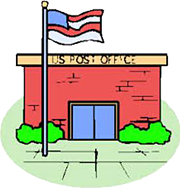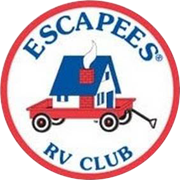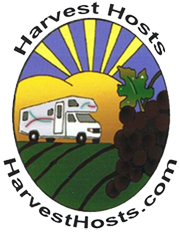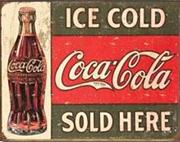SEPTEMBER 15, 2014.

Flathead Lake is one of the clearest lakes in the entire world, according to scientists. Boats often appear to be “floating” over the water because of this…a funny sight until you realize what’s happening.
FLATHEAD LAKE, MONTANA is one of dozens of lakes in the immediate area of our campground near Glacier National Park. It is the largest natural freshwater lake west of the Mississippi River in the contiguous United States. It is slightly larger than Lake Tahoe. The maximum depth is 370 feet, compared to the 1,130 foot depth of Lake Pend Oreille, near Sandpoint. As with all of the lakes and rivers in this area, the water is almost crystal clear due to the lack of plankton in the water. Flathead Lake is further distinguished: It is one of the cleanest lakes in the populated world, according to scientists. The lake is bordered on its eastern shore by the Mission Mountains and on the west by the Salish Mountains.
FORESTS AND STATE PARKS. There are numerous national forests and state parks around the lake and we visited several of them. Most have campsites as well as day use facilities. Unfortunately, having a big-rig like ours, we are not able to camp in most of these parks…and this holds true country-wide. They were designed for tent camping and small campers, ordinarily no longer than about 28 feet. So as you can tell, even though I’m pretty good at “threading the needle” when I back into a site, I’d never fit our 41 foot rig into a 28 foot site. Also, the roads in these parks are so narrow that we can’t even drive around to “take a look.” Thank goodness for the Jeep…it’ll go anywhere. The longer we’re on the road the happier I am that we bought it as our “toad.”
When planning a years-long motorhome trip such as ours, there are myriad considerations and decisions to be made. Not the least of these is deciding what size RV you’re going to have. The smaller ones will fit into almost all campsites but there is little room inside. We decided that having the size and comfort of a big rig offered benefits which outweighed being able to “fit” into all campsites. 90% of the time we’re happy with our choice. After all as I stated, our Jeep will take us almost anywhere. What we do is use it to take “satellite trips” from our campsite.
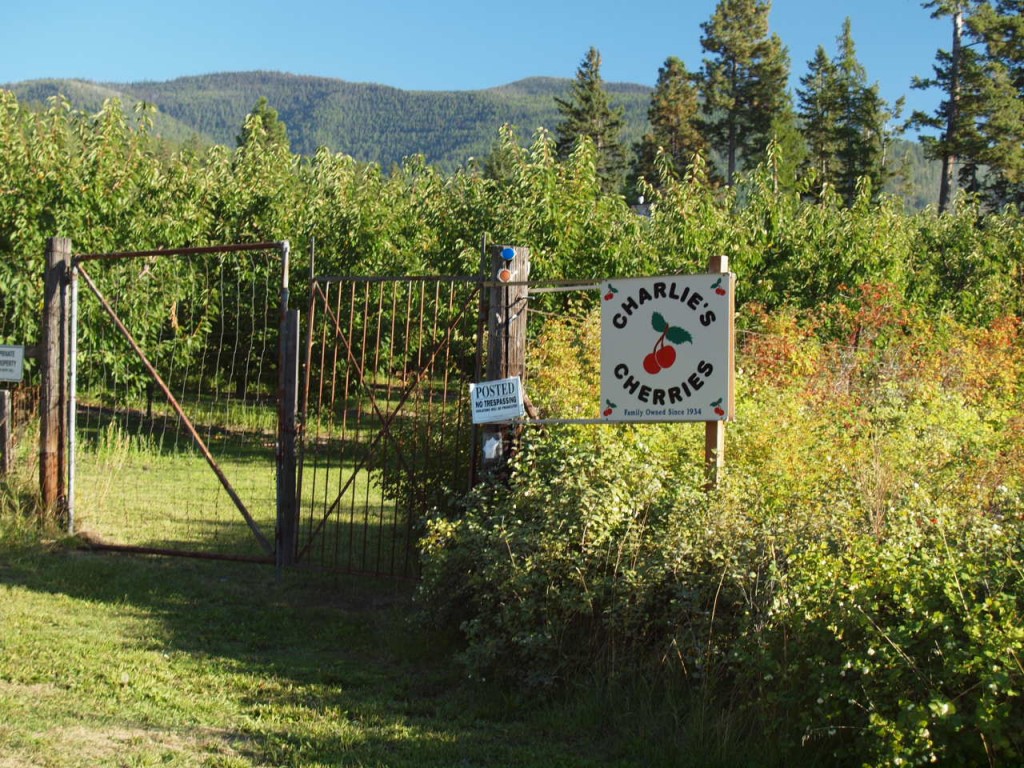
“Charlie’s Cherries.” Family owned since 1934. This was but one of many cherry orchards we saw while driving around Flathead Lake today.
FRUIT ORCHARDS AND FARMING: The Flathead valley was formed by the glacial damming of the Flathead River and sustains a remarkably mild climate for a region located this far north and inland. The Pacific Ocean is almost 400 miles to the west. The mild climate allows for cherry orchards on the east shore and vineyards for wine production on the west shore. There are also apple, pear, and plum orchards around the lake as well as lots and lots of huckleberry bushes. Today on our travels we returned with a couple dozen locally grown apples we bought from a farmer at the end of a lane leading to his orchard. We’ll make applesauce this evening. We also returned with fresh pears, cherries and huckleberries.
SO MUCH TO SEE AND DO: We’ve been here for a little more than two days and still haven’t ventured into Glacier National Park, the main attraction in this area. We’ll drive to the west entrance of the Park in the morning, talk with the rangers at the headquarters office and get some tips on what to see with the remaining time we’ll be here. We’ve got to keep moving…the apple farmer told us today that winter could arrive at any time, without any advance notice. And we know that at our next stop in Yellowstone there has already been some snowfall. We’ll have to move right along to get to our winter-home in the Texas hill country by the end of October.
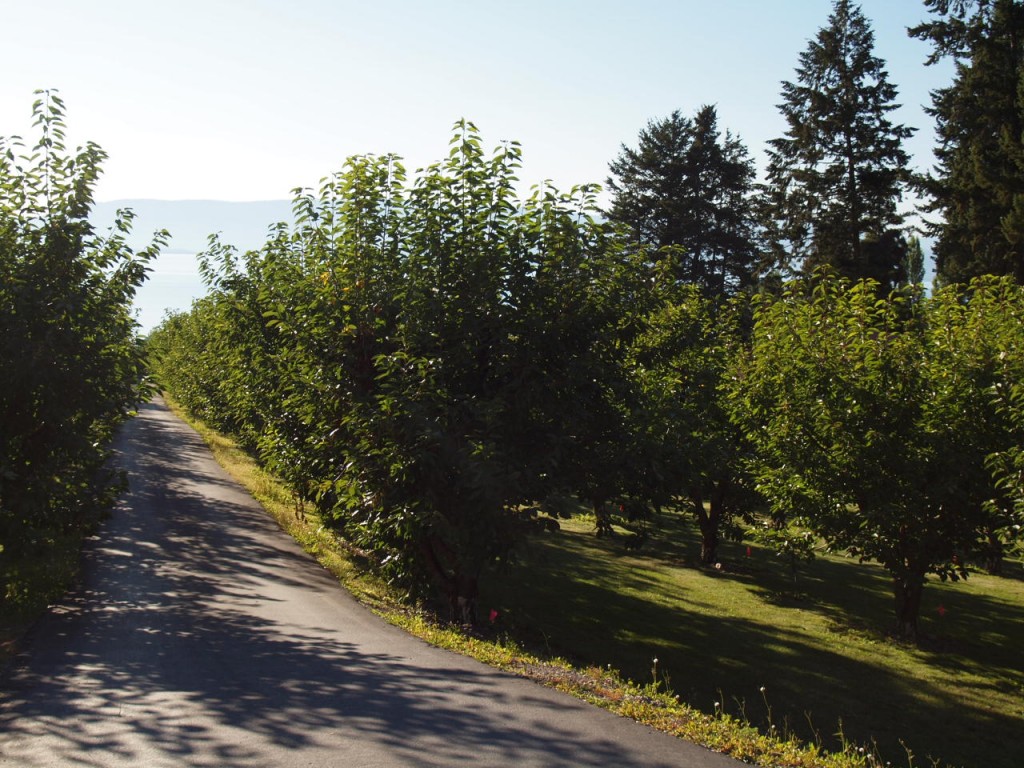
This beautiful cherry orchard reaches almost to the lake. It’s a hazy day, but that blue area in the photo “at the end of the path” is Flathead Lake.
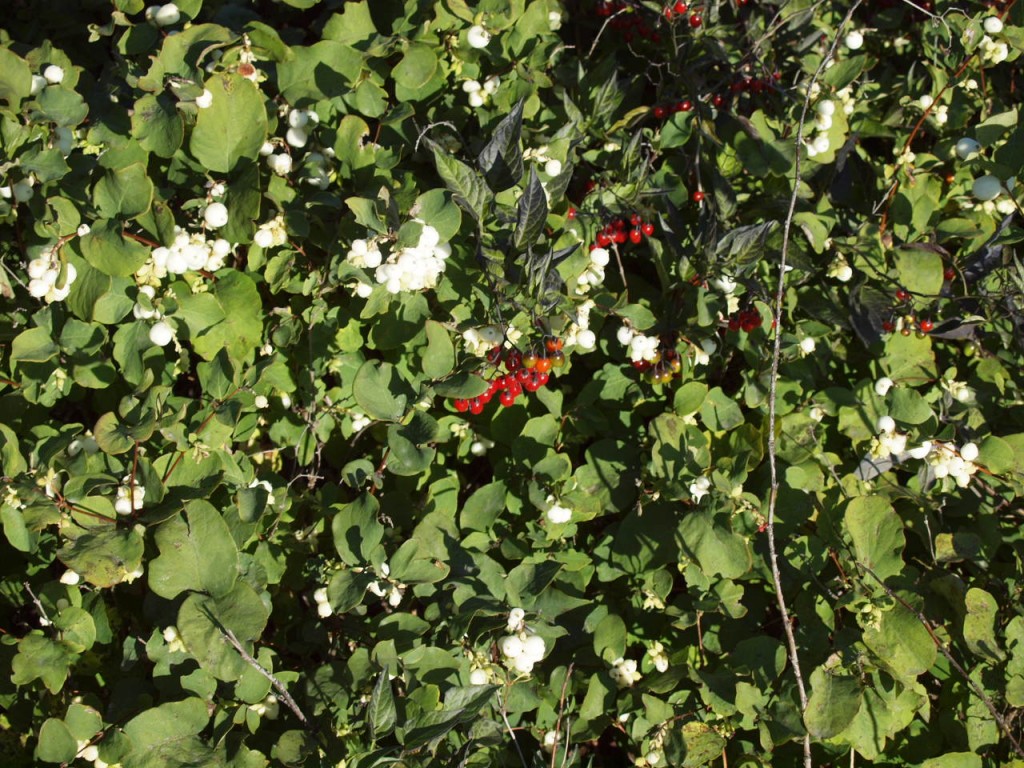
Huckleberry season is just about over for the year. Here are a few berries that will be ready to pick in about a week, weather permitting. The locals tell us that winter could arrive any day now.


